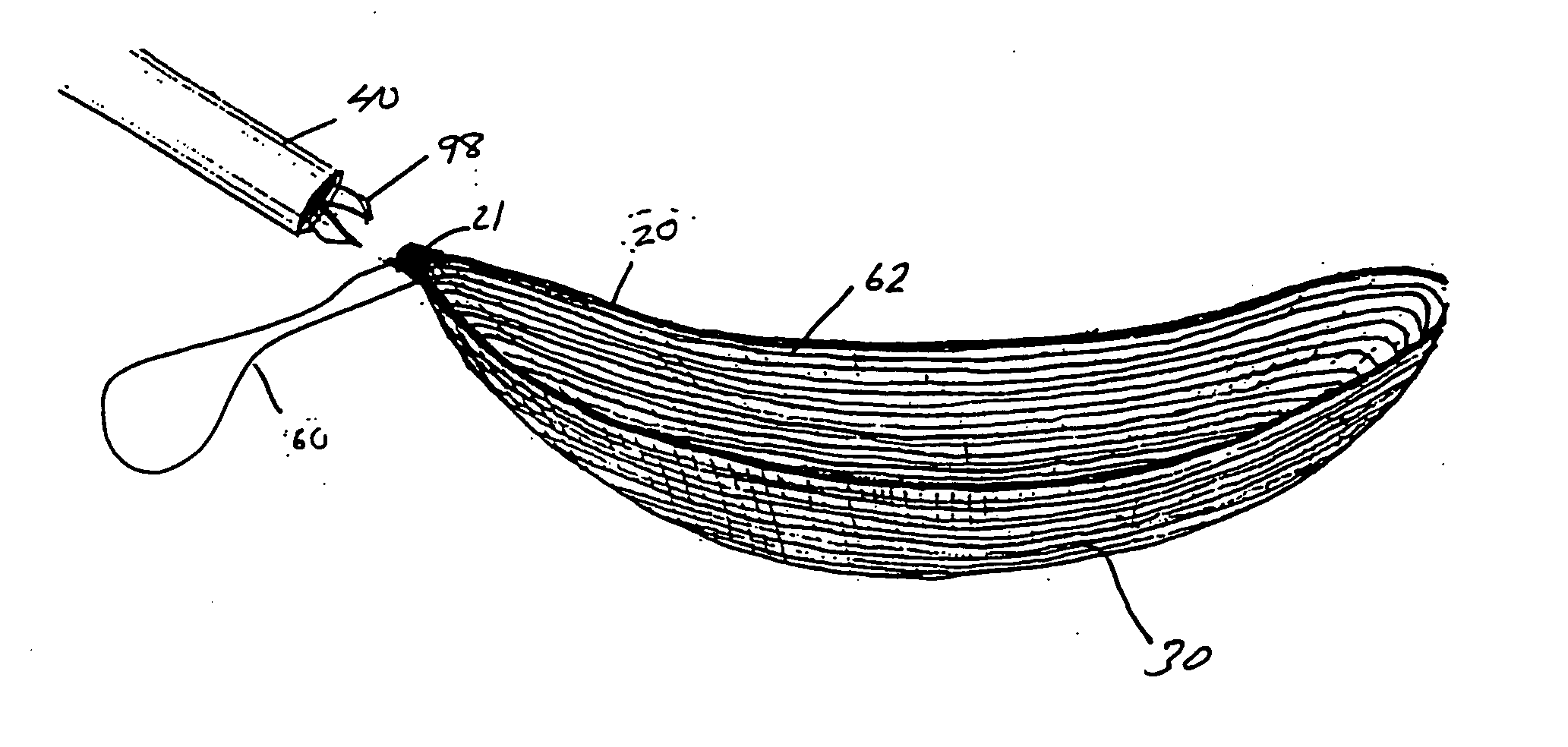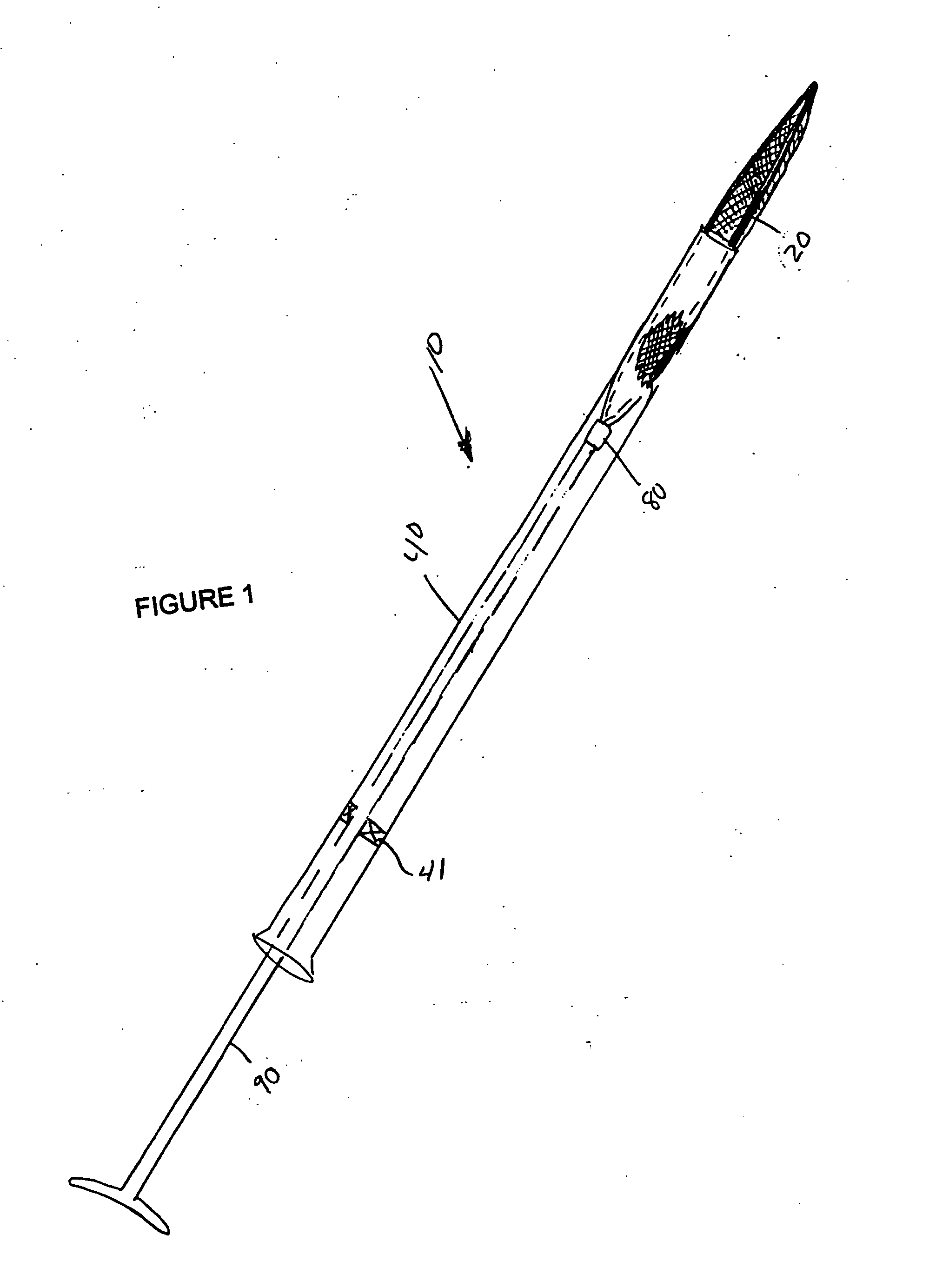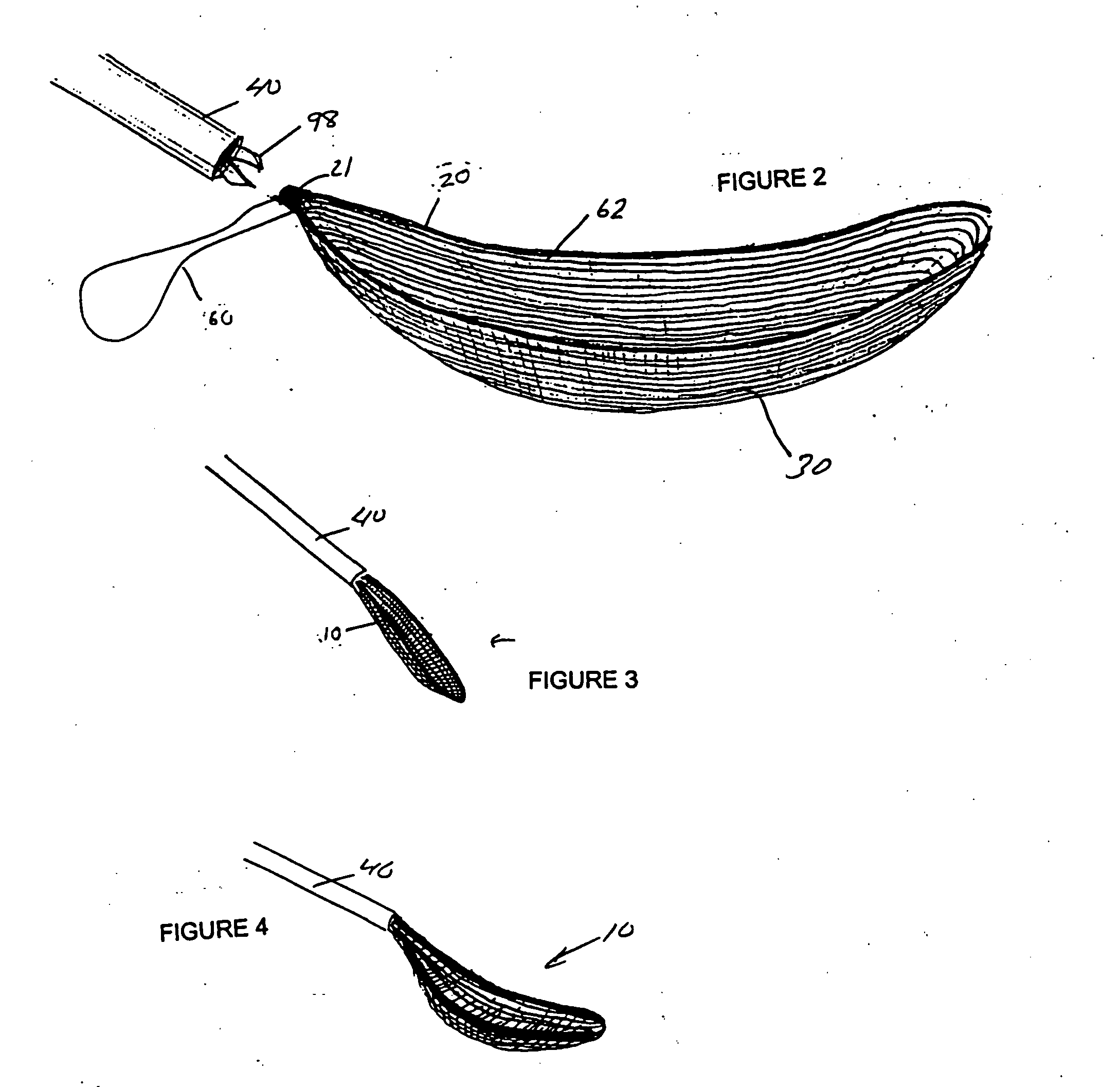Laparoscopic stone safety device and method
a safety device and laparoscopic technology, applied in the field of medical equipment, can solve the problems of affecting the safety of patients, so as to prevent complications, block the migration of stones, and avoid excessive manipulation.
- Summary
- Abstract
- Description
- Claims
- Application Information
AI Technical Summary
Benefits of technology
Problems solved by technology
Method used
Image
Examples
Embodiment Construction
[0030] The inventive device provides a membrane that acts as a trapping mechanism to immobilize, block or trap stones and stone fragments as they emerge from the gallbladder and bile ducts, thus preventing undesirable migration into the abdominal cavity. The membrane, which may be a thin layer, or of various three dimensional geometric configurations, or combination thereof, covers the subhepatic space in the abdomen to prevent the stones from migrating after emergence from either the gallbladder or biliary tract. This invention blocks stone migration and thus reduces patient trauma and the common complications that are associated with stone retrieval from laparoscopic cholecystectomy and laparoscopic common bile duct exploration procedures.
[0031] The netting assembly may be compressed and pre-packaged in a carrier tube sheath that is deployed by insertion through a carrier sheath within a laparoscopic port. The distal end of the device may extracted from the carrier tube sheath an...
PUM
 Login to View More
Login to View More Abstract
Description
Claims
Application Information
 Login to View More
Login to View More - R&D
- Intellectual Property
- Life Sciences
- Materials
- Tech Scout
- Unparalleled Data Quality
- Higher Quality Content
- 60% Fewer Hallucinations
Browse by: Latest US Patents, China's latest patents, Technical Efficacy Thesaurus, Application Domain, Technology Topic, Popular Technical Reports.
© 2025 PatSnap. All rights reserved.Legal|Privacy policy|Modern Slavery Act Transparency Statement|Sitemap|About US| Contact US: help@patsnap.com



